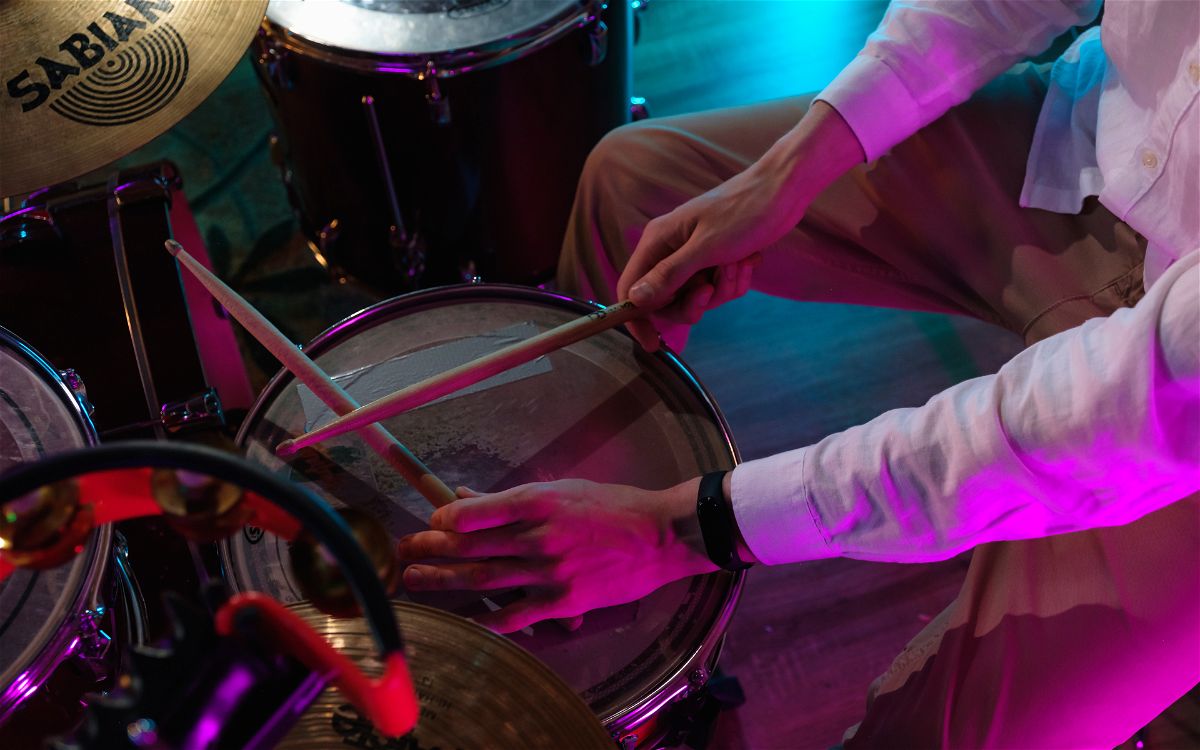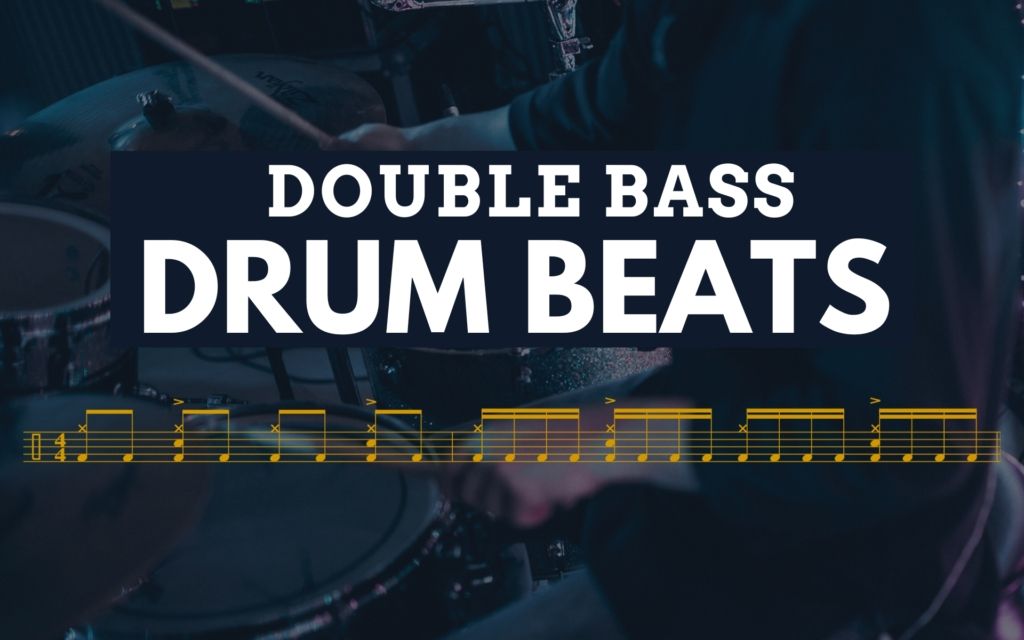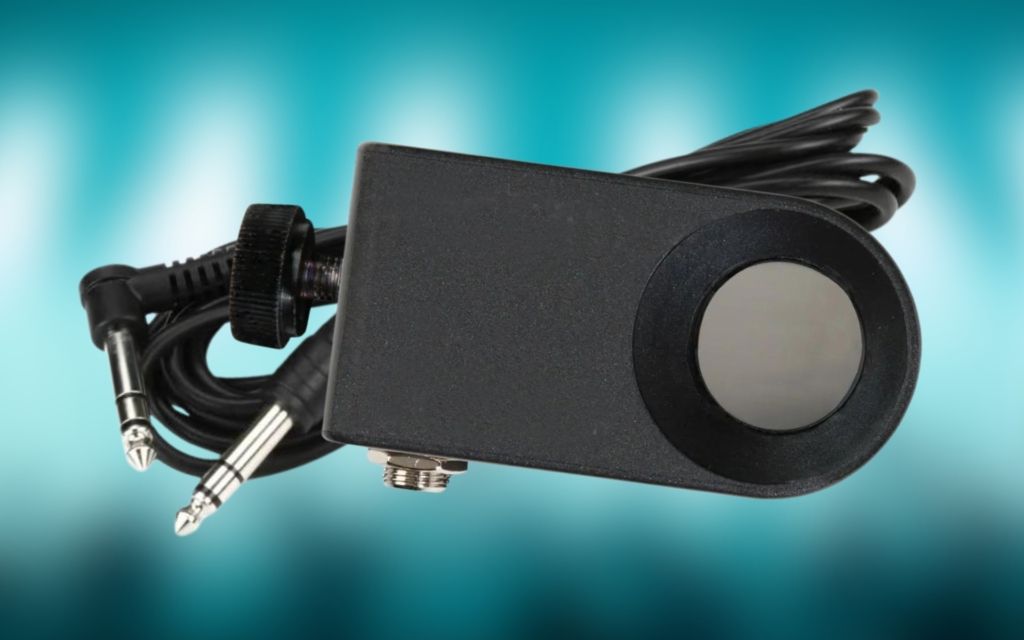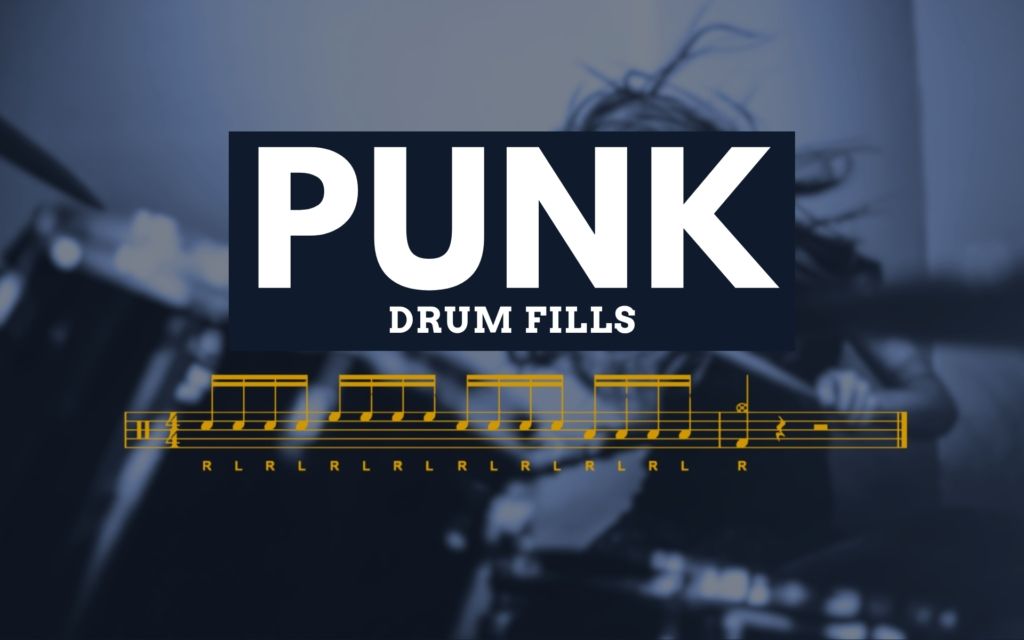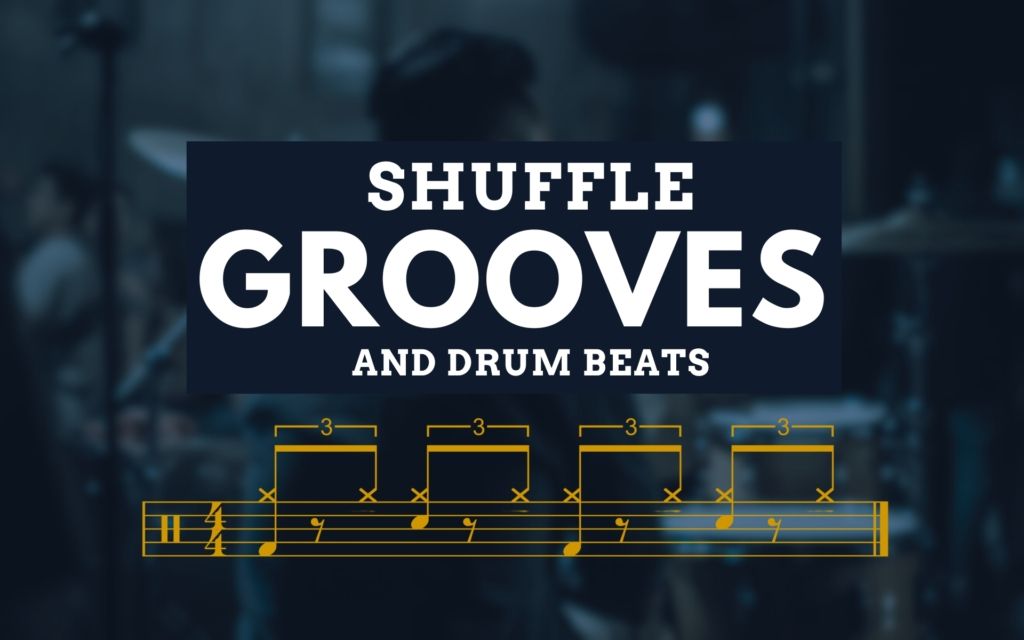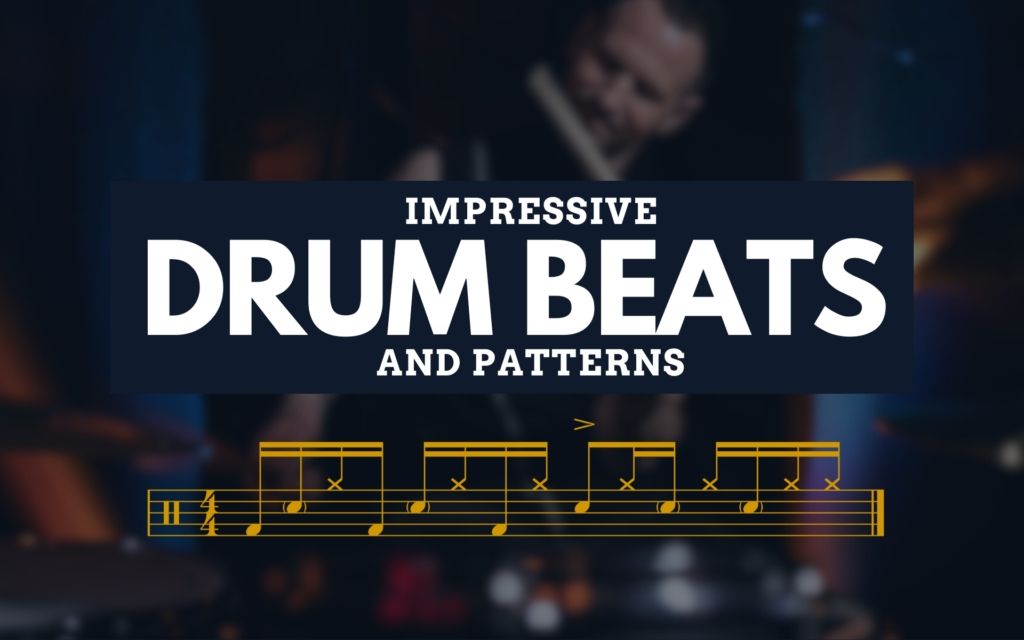If you’ve been playing an instrument for a while, you would have undoubtedly heard of these terms. Half time and double time in music are often misunderstood when mentioned, and it can lead to frustration when band members aren’t on the same page.
Here’s a short guide to understanding the differences. I’ll explain them as they apply to drumming, but the same rules apply for all instruments. I’ll also give you a few tips for practicing these concepts to get a better grasp of them.
Contents
Regular Time Definition
Before getting into double time or half time in music, you need to understand what regular time is. Regular time is the most common way that musicians play, and it refers to when there is a solid backbeat on beats 2 and 4 of a bar.
A basic rock groove would be a good example of a drum beat played in regular time.

With regular time being the standard way of approaching music, this will be the groove that you need to lock on to when understanding how half time and double time work.
The hi-hat pattern is what you need to focus on, in particular, as that will stay the same when you switch between feels. You could play that with a quarter note pulse, eighth note pulse, or even as sixteenth notes. It just helps to keep the same tempo.

Half Time Definition
A half-time feel on the drums will happen when you cut the note values of your bass drum and snare drum to become half notes. Instead of playing each drum twice in a bar, you’ll only play them once. So, the bass drum will fall on count 1, and the snare drum will fall on count 3.
Remember that your hi-hat pattern will stay the same to anchor the feel.
That half-time beat will look like this:

Your backbeat has now shifted to only landing once in each bar, and that’s what gives the half-time feel. Some people may think that it sounds slower than the previous standard-time groove, but it’s actually going at the exact same speed. That’s where a bit of the confusion comes in.
You don’t necessarily need to cut all your drum notes in half, but you need to enforce the feeling of the backbeat only landing once in the bar instead of twice.
You can commonly hear half-time grooves in hip-hop and metal music. With hip-hop, the grooves are played to give space to a rapper that typically raps over the groove in their own regular or double-time rhythms.
In metal, half-time grooves are mostly used in breakdowns.
Double Time Definition
A double-time groove will have the opposite effect. You’re going to double the number of times you play the drums to make the groove sound a lot busier. Instead of your backbeat landing twice in the bar, it will land four times.
That will look like this:

What happens when playing a double-time groove is that your snare drum strikes start to fall on all the offbeat counts. That’s one of the primary identifiers of a double-time drum beat.
These types of beats are very popular in styles like gospel, country, rock, and punk. They always sound busy and exciting, so they’re played in the more energetic styles of music.
Shuffle Grooves
We’re going to look at another groove example to see the differences between regular time, half time, and double time. In this instance, we’ll be looking at shuffle grooves.
Shuffle grooves are almost as common as eighth note grooves, and they regularly shift between these different feels on the drums.
When playing a shuffle groove, this will be your anchoring rhythm on the hi-hat between the feels:

Regular Time Shuffle
A regular-time shuffle will stick to the same rules as a regular-time rock groove. You’re going to play your bass drum on beats 1 and 3, and you’re going to play your snare drum on beats 2 and 4.

When this groove speeds up, it starts to sound very vibrant, and it’s most commonly played in rock and blues settings.
Half Time Shuffle
The half-time shuffle is arguably the most popular shuffle you can play on the drums, and it was made famous by drummers like John Bonham, Bernard Purdie, and Jeff Porcaro.
When turning the shuffle into a half-time feel, you’re going to only play one snare drum on beat 3 of every bar.

This beat starts to sound seriously groovy when you add dynamics, a few ghost notes, and extra kick drums to it. The way it sounds is the reason why so many drummers love it.

Double Time Shuffle
When turning a shuffle groove into a double-time feel, you’re going to do the same thing of playing all the snare drums on the offbeats. The difference here is that the offbeats fall closer to the downbeats, making the groove sound a bit wonky.
Double-time shuffles are far less common than standard and half-time ones, but it’s still good to know how to play them so that you understand how to apply a double-time feel.

The Importance of Understanding Half Time vs Double Time
What is half time in music? That’s something that every drummer needs to understand as deeply as possible, as going into half-time mode is something that bands do all the time to add a bit of spice and flavor to certain songs.
Knowing how to play double-time is also important, especially if you play heavier and more energetic styles of music.
Being able to flawlessly switch between these three feels will make you a better drummer. It will give you more control.
When bands switch between the feels, it’s typically the drummer that anchors everything. Remember to use your hi-hat as the reference point.
Getting Better at Playing Half Time and Double Time Drum Grooves
Here are two tried and tested ways of getting better at understanding how to switch between half-time and double-time grooves.
Metronome
The metronome is your best friend as a drummer. A solid way of working on the grooves is to play through them while keeping a metronome beeping.
A good exercise to do is to play each type of feel for one bar and then shift to the next one. You’ll be able to hear how those sound, along with the constant tempo marking of the metronome.
Repeat this same passage over and over, and you’ll get a good feel for the differences.

Popular Songs
Another solid way of understanding the differences is to listen and play along to songs that have clear distinctions between the different feels.
Here are a few examples of tunes with standard-time grooves:
- Billie Jean – Michael Jackson
- Yellow – Coldplay
- Seven Nation Army – The White Stripes
Here are songs with half-time feels:
- Fool in the Rain – Led Zeppelin
- Rosanna – Toto
Here are songs with double-time feels:
- Give It All – Rise Against
- Satellite – Rise Against
Closing Thoughts
One thing to remember is that all the rules of note placements aren’t set in stone. You can still have a half-time feel, even if there aren’t any snare drums played in a bar. It just needs to feel like the music is going in half time.
It’s also all relative to what the music is doing and what time signature you’re playing in. It may sound like you’re playing a half-time groove, but it will just be a regular-time groove if the music itself is very slow.
You could break down the theory even more when it comes to time signatures, but it’s a lot easier for drummers just to hear the differences and go from there.

